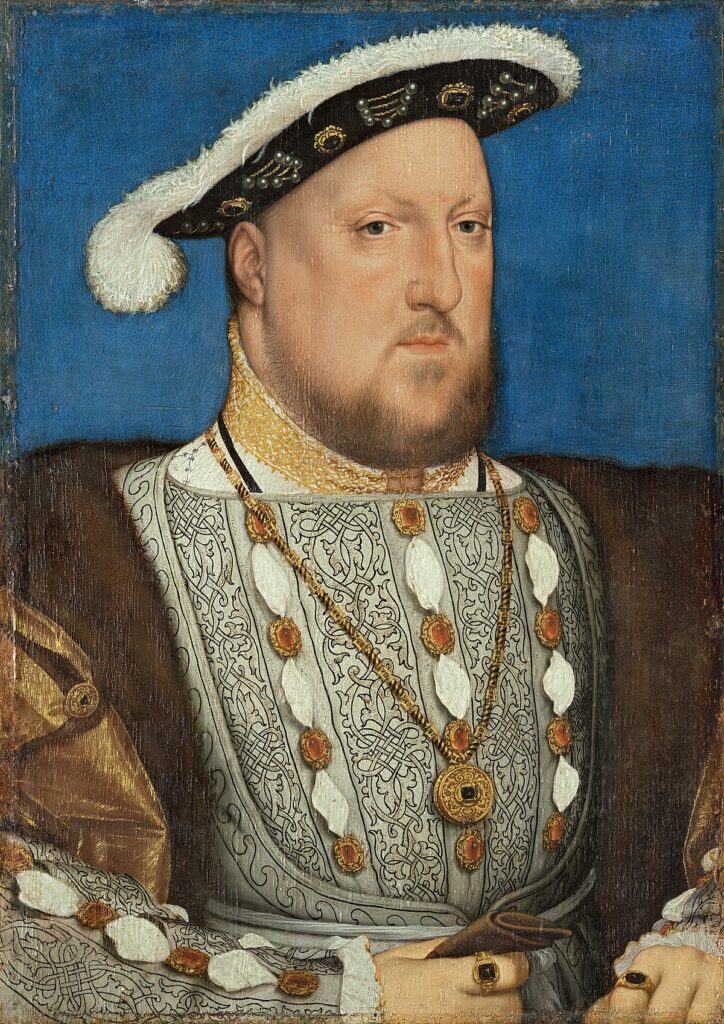In an Era of Enchantment With Monarchy, the Tudors Rule Again
Were they a rock band, they would be enjoying a comeback tour.

If the Tudors were a rock band, they would be enjoying a comeback tour, their ability to draw crowds undiminished by age or familiarity. The death of Elizabeth II brought her namesake to mind, as did King Charles III’s oath to defend the Church of England: That promise was first made by the father of Elizabeth I, Henry VIII.
Just days after Elizabeth II died, so did Hilary Mantel, whose “Wolf Hall” novels brought the Tudor court, and Henry VIII’s majesty and manias, to life through the eyes of Thomas Cromwell, whose rise and fall hinged on the search for a Tudor heir. Mantel wrote the troubled middle years of the Tudor age, before anyone knew that Elizabeth would define her age.
On Broadway, packed houses bop to bangers at “Six,” a musical from Toby Marlow and Lucy Moss that takes the form of a song contest between the wives of Henry VIII. It originated at the University of Cambridge, debuted the Edinburgh Film Festival, and features standards like “Ex-Wives,” “Don’t Lose Ur Head,” and “Haus of Holbein.”
Now, we have “The Tudors: Art and Majesty in Renaissance England” on display at the Metropolitan Museum of Art through January 8. It is curated by Elizabeth Cleland, curator in the Met’s department of European Sculpture and Decorative Arts, and Adam Eaker, associate curator in the department of European Paintings.
There were five Tudor rulers: Henry VII, Henry VIII, the short lived Edward VI, the Catholic Mary I, and the Virgin Queen, Elizabeth I. The Tudor Rose bloomed between 1485 and 1603. This was the age of Shakespeare and schism, of Thomas More writing, and Hans Holbein painting. An age of magnificent creation.
It was also an era suspended between the medieval and the modern. The Tudors emerged from the clash between the Houses of Lancaster and York, a new dynasty to heal an old rift. Henry VII’s break from Rome ended the Church’s millennium long hold. Elizabeth I’s victory over the Spanish Armada ensured that Spanish would not be the language of London.
“The Tudors” conveys some of this history, but it is a show in an art museum, after all, and its delight is that it convenes these long dead potentates in oil and thread, displaying the fist of power in the velvet glove of art. The show clocks in at more than 100 objects, including paintings, tapestries, manuscripts, sculptures, and armor.
The exhibition unfolds in five sections divided into long galleries and tight alcoves, the space splayed out to resemble a Tudor palace. The showstoppers are the portraits of the men and women who would have been the suns around which life at court revolved: Henry VII and his unexpected heirs. These include what is called the Hampden Portrait.
That is the earliest surviving life-size depiction of Elizabeth, here presented not as quasi-divine but as eligible, her beauty augmented by a Turkish rug underfoot and a cloth of gold in the background. In the painting’s corner, a cluster of honeysuckle, pomegranates, grapes, and pears suggest not virginity but fecundity.
Decidedly different is “Henry VIII,” of three decades prior. A work of Holbein the Younger, its wealth is a projected, tangible thing. Gold leaf ensures that Henry still shines, and the background of ultramarine pigment imported from what is now Afghanistan delivers a blue sky all the more gorgeous for being nearly blotted out by Henry’s imposing form.

The Tudors saw not only themselves when they looked at their art. “Creation and Fall of Man” is a tapestry whose scale fits its subject, purchased by Henry VII from a Flemish dealer whose clients included kings and pontiffs. Woven of gold and silver, it reminds that the Tudors were God-haunted, and that under their rule England would be ripped asunder over religion.
At the center of those battles was a portrait of Mary Tudor by Hans Eworth in 1554. Mary, daughter of Catherine of Aragon, was devoted to her mother’s Catholicism. The first woman to rule England outright after Edward VI died at just 16 years old. She wears a cross that belonged to her mother, and a reliquary housing fragments of a cross. Mary was the last Catholic on the throne.
Another Catholic was More, who also met his end on an island unmoored from the Vatican. We meet him in “Sir Thomas More,” another masterwork by Holbein the Younger, who came to England armed with the recommendation of the humanist polymath Desderius Erasmus, and in More found another mind on fire. Soon he would lose his head, eventually becoming a saint.
Under the eyes of kings and queens, in arm’s reach of portraits of ambassadors and courtiers, Ms. Cleland sat down with the Sun. She reflected that while the work for this show began years ago, its debut now aligns with a renewed interest in the “enchantment of monarchy,” the still potent magic of scepter and orb, the lingering temptation to bend the knee.

